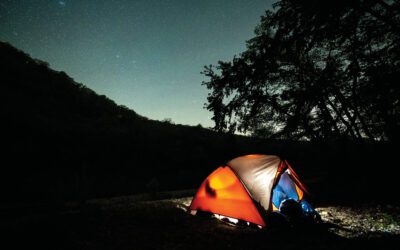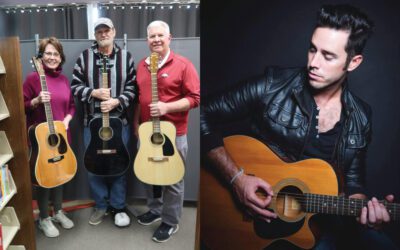[title subtitle=”WORDS Scott Faldon
IMAGE courtesy The Woodsman Company”][/title]
While cycling experienced a quarantine-induced boom last year, one segment of the bike industry has been growing steadily since before COVID-19 changed the world…E-bikes.
“E-bike” is shorthand for electric bicycle. While some operate more like a motorcycle with a throttle that controls speed and require no pedaling, most E-bikes in the US are electric-assist. That means you’ve got to pedal, and the electric motor will add power as needed depending on the setting you choose and the terrain. If you’re gently pedaling along the Greg Smith River Trail on a low setting, you might not engage the motor. But if you put it in a higher power setting as you’re climbing up Custer Blvd. headed east toward Deer Trails Golf Course, it will kick in with extra wattage to power you up the hill.
“There’s very little lag in the assistance, when it senses a drop in power from the pedaling then the motor will start adding more,” Scott Chapman, manager of The Woodsman Company’s cycling department said. “What a lot of people don’t realize is you don’t even have to use the boost. But it’s there in case you do want it. Let’s say you’ve gone for a ride and there’s a hill between you and home, you can then add some boost to help you get there.”
E-bike models come in a variety of styles and power outputs. From traditional road bike designs to mountain bikes to gravel grinders perfect for country roads to cargo bikes designed for hauling heavy loads, there is an E-bike for every riding style.
In addition to flattening out hills, E-bikes allow people of varying cycling ability to ride together. A grandparent can keep up with a youngster. A spouse who is a casual rider can maintain the same pace as their counterpart who is a devoted cyclist. Somebody working at getting fit can ride alongside their buddy who knocks off century rides once per month.
Chapman, a former elite road racer, admits when E-bikes first came along, he joined others in scoffing at them. He considered them “cheating.” But a couple of things changed his mind about the bikes. First, he saw a video about Paul Basagoitia, a professional, freeride mountain biker who was paralyzed from the waist down in 2015. After years of rehab, Basagoitia is riding again thanks to an E-bike.
“Truthfully, that opened my eyes to the possibilities for E-bikes,” Chapman said. “I realized these were tools for people with medical conditions or injuries to get out and enjoy riding a bike in a way they normally couldn’t.”
The second thing to convince Chapman of E-bike’s place in the cycling world? He rode one.
“They are a blast,” Chapman said. “You step on the pedal, and you feel that power … it’s really cool.”
Growing research studies are showing the positive benefits of E-bikes as well. One study showed that riding an E-bike would burn between 280 to 390 calories per hour (about half of a non-electric bicycle) when ridden around 12mph. While Colorado State University researchers discovered when non-active people were given an E-bike and told to ride for at least forty minutes three times per week, one hundred percent of the study’s participants rode more than asked as they improved their fitness, blood sugar levels and percentage of body fat.
Aside from health benefits, Chapman said E-bikes can make commuting in hilly Fort Smith much easier. “There are a lot of people who might live within five miles of where they work or a store they go to often,” Chapman said. “With a regular bike they may not be comfortable making that trip, but with an E-bike they’d be much more likely to not drive their car.”
E-bike prices begin at $1,900. That may seem high, but the number of E-bikes could be getting a boost from Congress in the near future. A bill filed earlier this year proposes a thirty percent tax credit for E-bikes that cost up to $8,000. Proponents of the legislation cite increasing physical activity and decreasing traffic congestion as reasons to pass it into law.
Best Places to E-Bike
Chaffee Crossing
Greg Smith River Trail
A tour of The Unexpected Murals
What You Need (in addition to a bike)
Helmet
Water bottles or hydration pack
Panniers (if you’re commuting)
What to Know
Bicycles are treated like all other vehicles when it comes to traffic laws – with few exceptions. That means you should ride on the right side of the road, with the flow of traffic and not into it. One of the big exceptions is Arkansas has recently legalized the Idaho Stop for cyclists. This means red traffic lights may be treated like stop signs and stop signs may be treated like yield signs.
FOR MORE INFORMATION
Planning your next outdoor adventure?
Visit The Woodsman Company in Fort Smith, Arkansas for all your adventure needs!
5609 Rogers Ave, Fort Smith, Arkansas
479.452.3559
thewoodsmancompany.com




